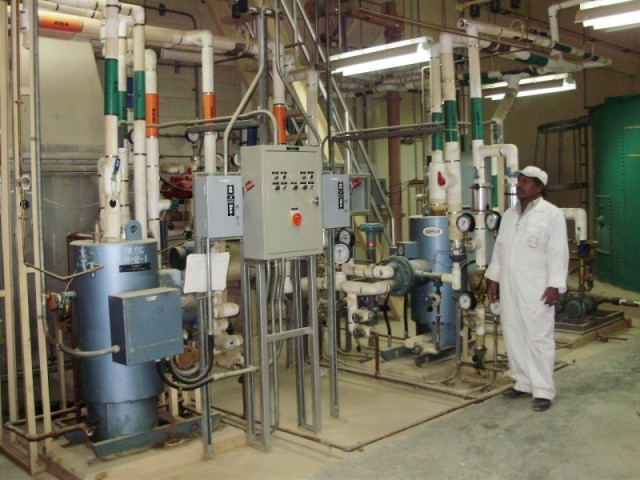

Cleaning of Pipes
Cleaning of Pipes
The necessity for systematic and periodic cleaning of pipelines is borne out by the fact that the carrying capacity of the pipes gets reduced due to growth of slimes, incrustations or deposits. Pipeline cleaning techniques include flushing, swabbing, jetting and scraping. Flushing and swabbing of pipes, are non-aggressive, simple and inexpensive techniques in maintaining the capacity. Flushing and swabbing are effective for pipes up to 300mm in diameters.
Flushing
Flushing is a well established technique for small diameter mains where there is adequate pressure in the main. Flushing is a method to allow water to flow at high velocity in a pipeline, to remove deposits from inside the pipeline and finally to escape through a small diameter branch scour pipe for a period of 5 to 10 min. The scour pipe is provided with a tee connection from the main and fixed with a sluice valve and a semicircular discharge pipe .The period of flushing is determined by the quality of water leaving the scour pipes. For effective flushing a minimum velocity of 0.9 to 1.2 m/ sec, (preferably 1.0m/sec) has to be ensured and that the flows are in one direction and the dirty water does not enter the cleaned section, by suitable manipulation as well as sequence of valve operation
Usually water of about two times the volume of the length of pipeline to be cleaned is to be discharged. About 100 to 300 m length of pipeline can be flushed in one operation. In systematic flushing programme water from a cleaned main is allowed to enter the not cleaned main for cleaning. It is always desirable that such operations are carried out during the period when the supply at the source is satisfactory. Flushing can only remove the zoological life and loose deposits of small sized particles and not the slimy layers, large deposits and hard incrustations
The cleaning of inside of the pipeline can be done effectively by inserting a swab and steering through the pipeline hydraulically. The swab is a soft, flexible, highly compressible and can retain the original shape when cothpression is released and made of polyurethane form of cylindrical shape 30 to 60 cm long with varying diameters. For pipes diameters 75 to 100 mm, the swab diameter is usually 25 mm larger in size while for larger diameter pipes it is 50 to 75 mm larger than the diameter of the pipeline to be cleaned. Swabs can remove much of the slime, zoological life and loose deposits adhering to the inside of the pipes. The swab is pushed through the pipe by the momentum of the flowing water. As the swab moves, it sweeps out the loose and slimy layer adhering to the inside surface of the pipeline and the deposits along with the flowing water.
7 Responses to “Cleaning of Pipes”
Leave a Reply







 LIKE TO GET UPDATES
LIKE TO GET UPDATES  TO GET EXPERT GUIDE
TO GET EXPERT GUIDE
Thanks for sharing, I found this article, while googling for some downloads and ran across this site, interesting comments and great points made.
great post as usual!
Very useful article…Thanks for sharing.
Thank you so much for sharing this article. It was very useful and gave us a new idea how to clean a 4 inches steel pipe whose capacity has been reduced due to a ferrous incrustations and deposits.
Very useful article. Thanks for sharing
Hi,
Can you swab 2 km length of 300mm PVC pipeline?
Thanks
Dayan
Thank you for sharing this article. Being an Environmental Engineer this is like a Bible for me. Hoping for the similar responses in futture also. Pls mail articles related to Water Treatment, Sewerage & Storm Water Design & maintenance. Thanks once again…..